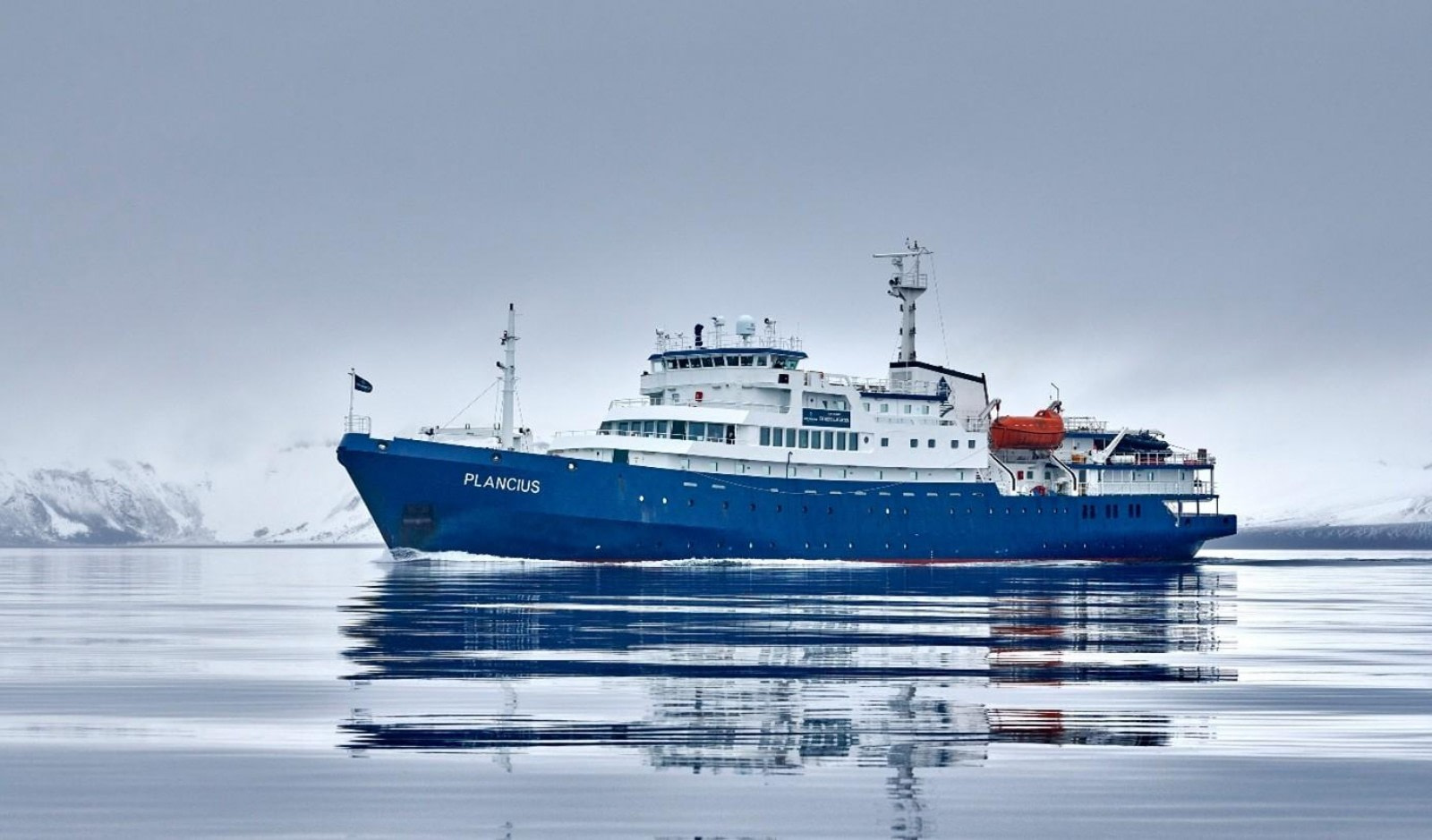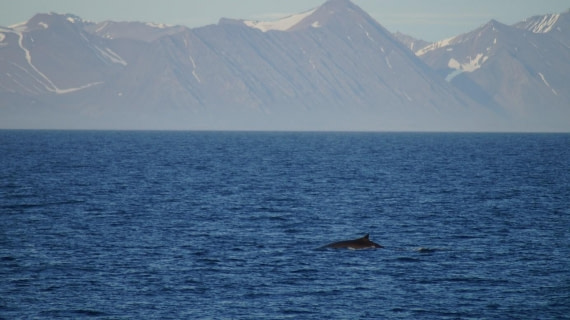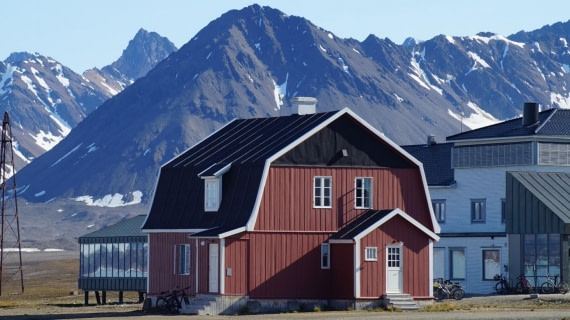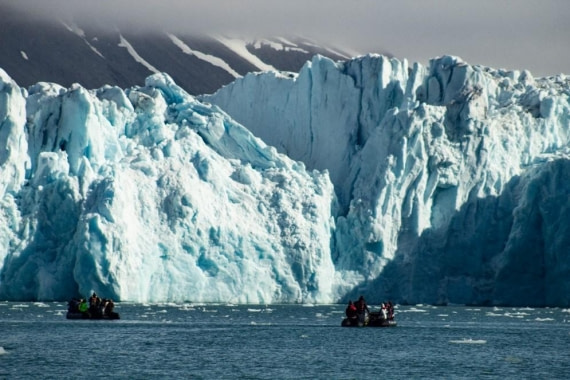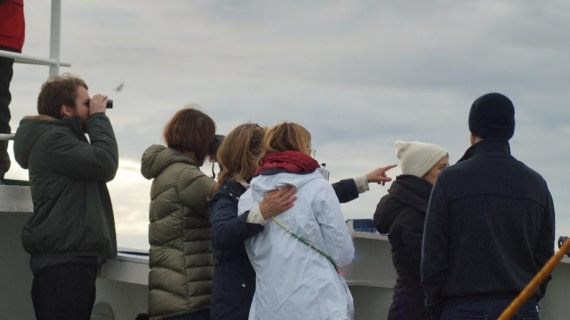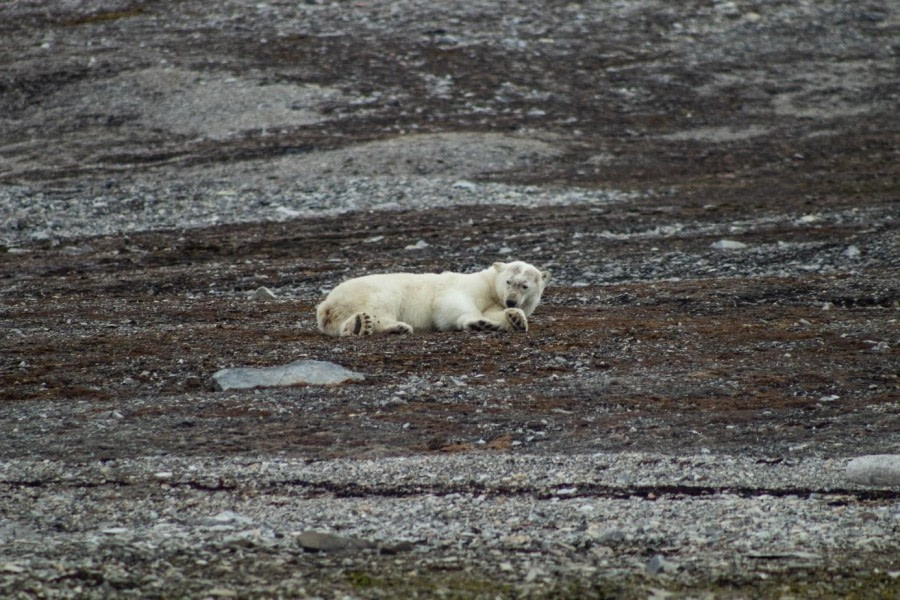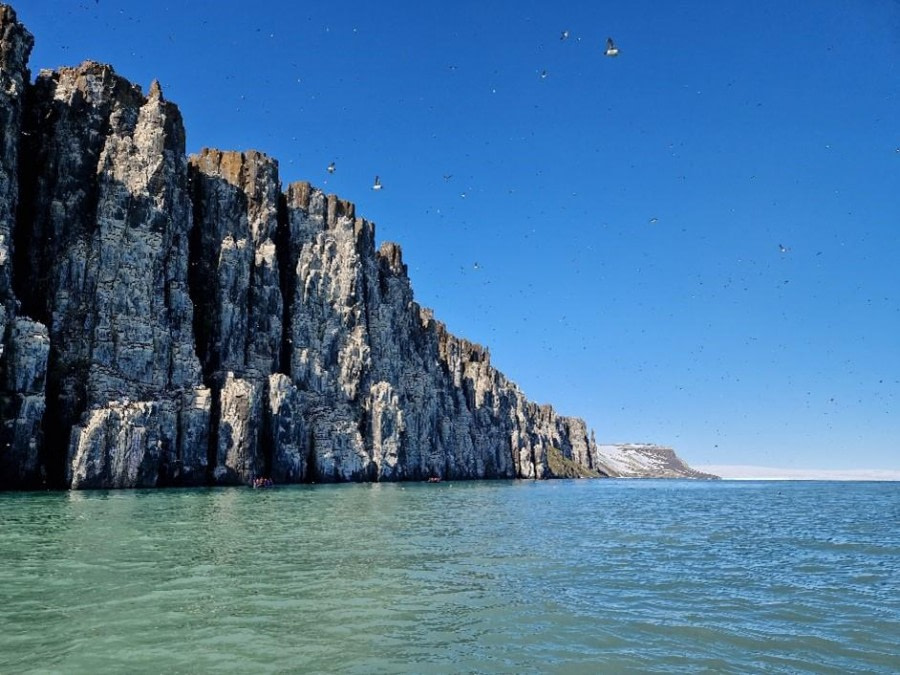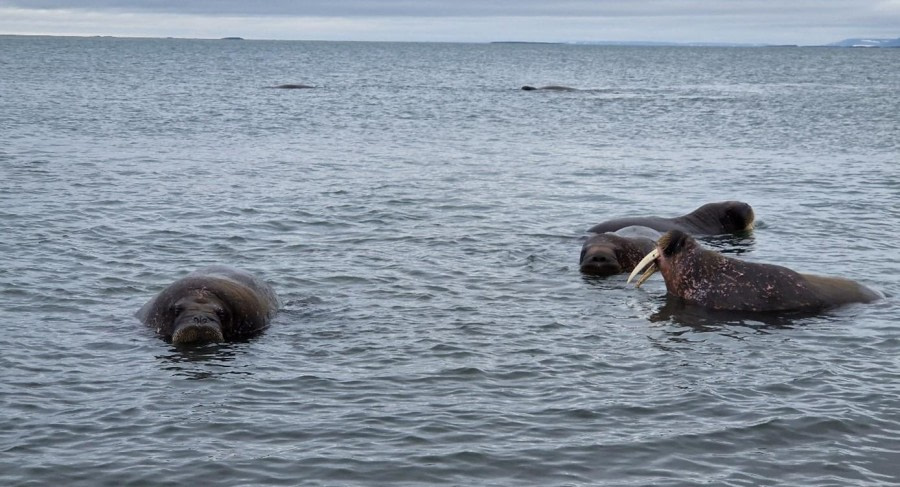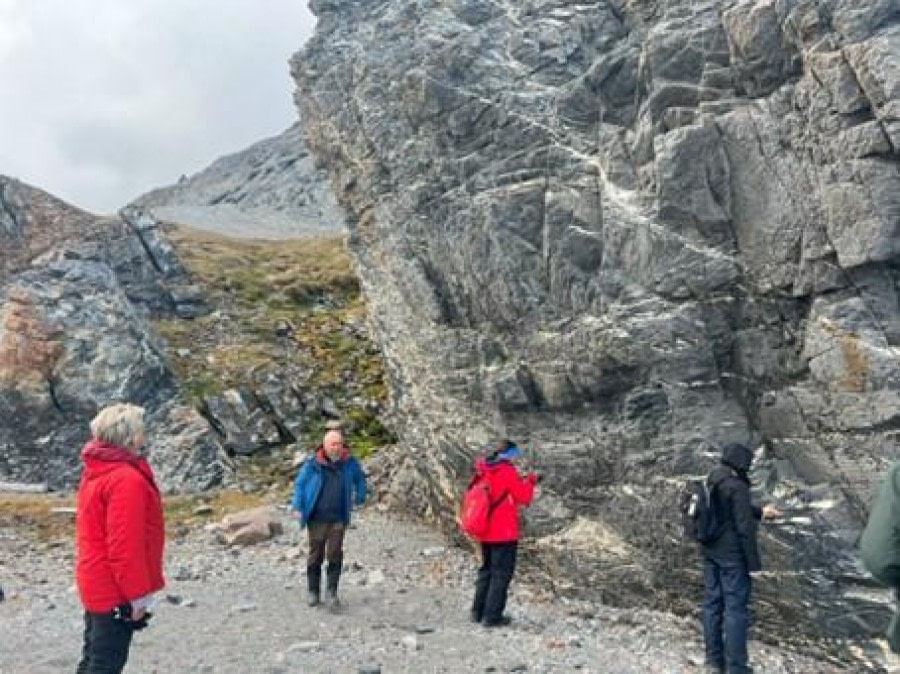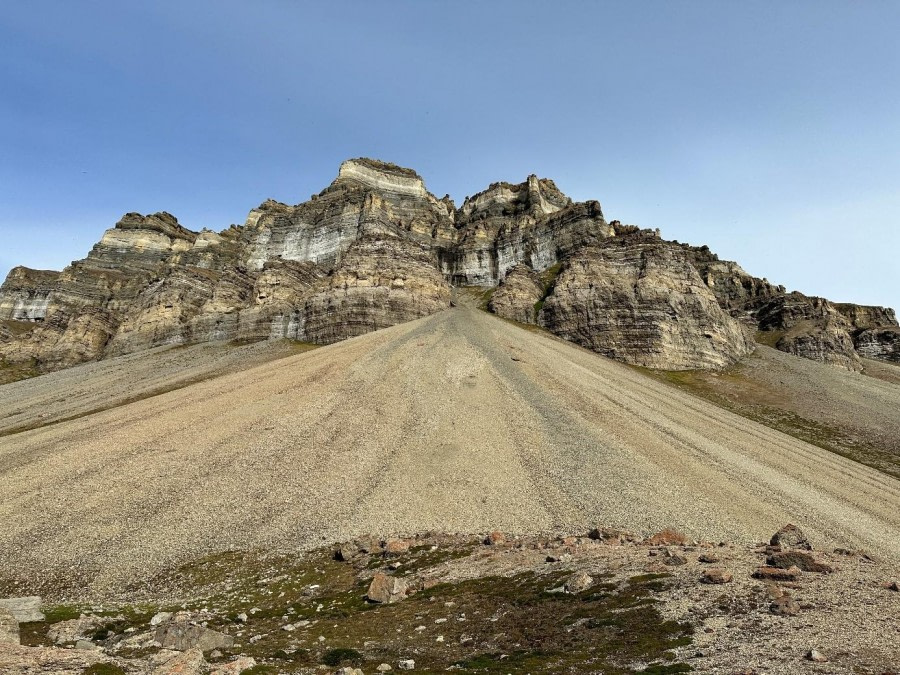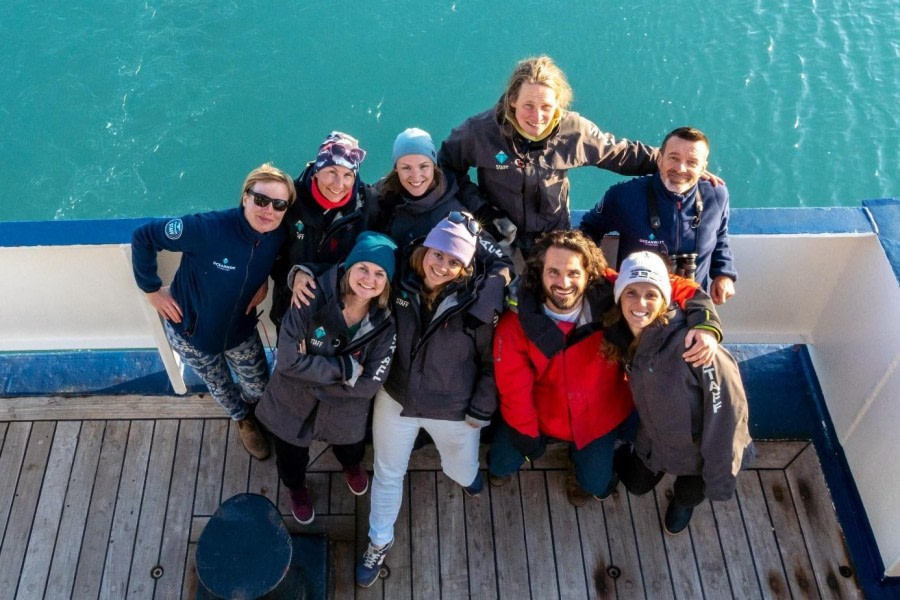| Date: | 15.07.2023 |
| Position: | 78°14.6’N / 015°32.6’E |
| Wind: | SE 4 |
| Weather: | Clear |
| Air Temperature: | +12 |
We began arriving in Longyearbyen in the afternoon, having travelled from all over the world to reach the spectacular archipelago of Svalbard. Once everyone was on board, we took part in all the necessary safety briefings and were shown where important safety features of the ship are. We then spent some time familiarising ourselves with the layout of our new home MV Plancius and enjoying the views outside as we set sail. Before dinner Captain Miia wished us well on our journey with a toast in the lounge and Expedition Leader Christophe introduced himself. We then set off to the restaurant for a delicious first buffet dinner.
A few hours later, after some drinks and unpacking, we had a very special encounter with a fin whale. We had great views as it surfaced several times. Fin whales are the second largest animal in the world, only a few meters shorter than a blue whale, and we could clearly hear its blow as it refreshed its breath at the surface before diving. What an incredibly special start to the trip.
